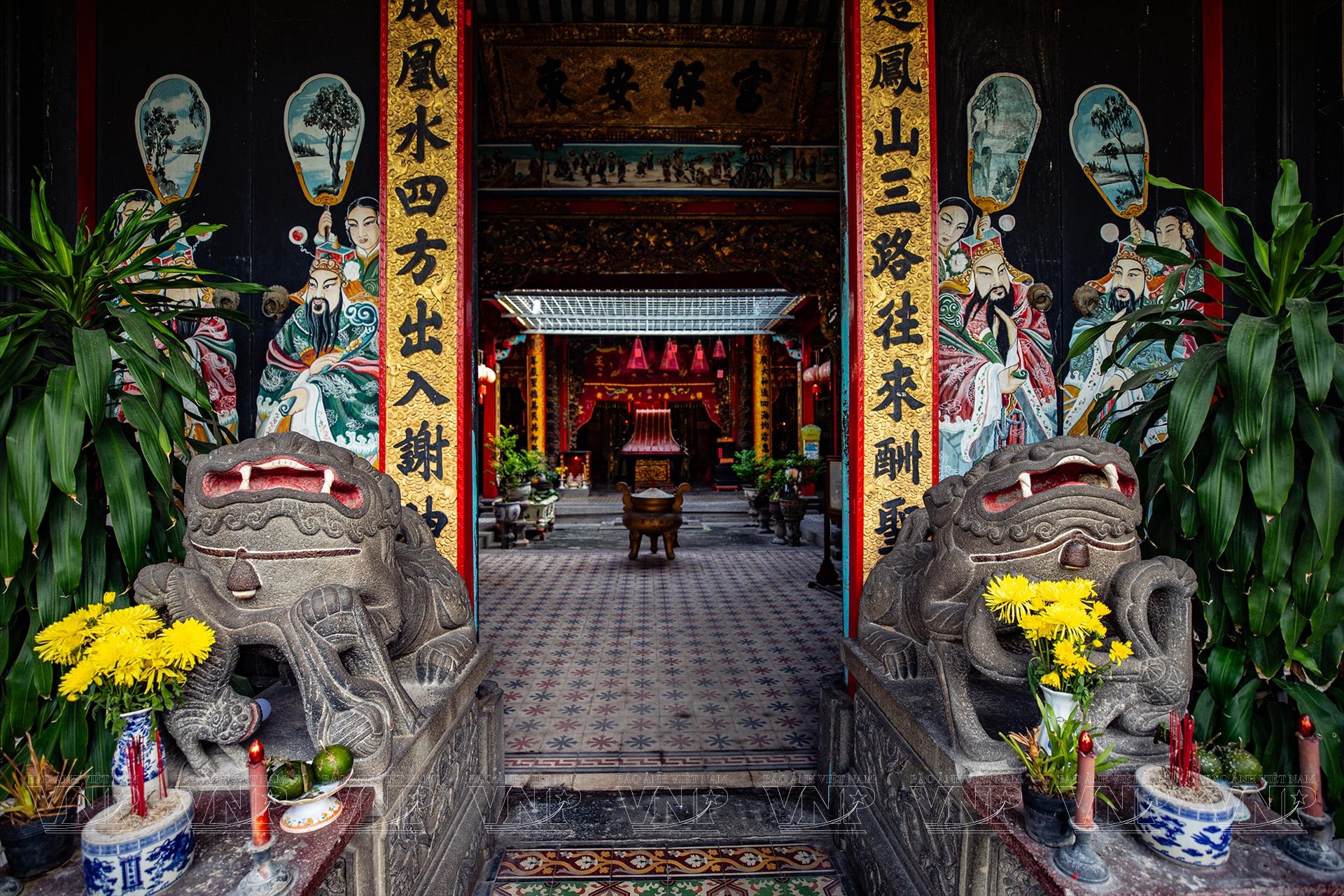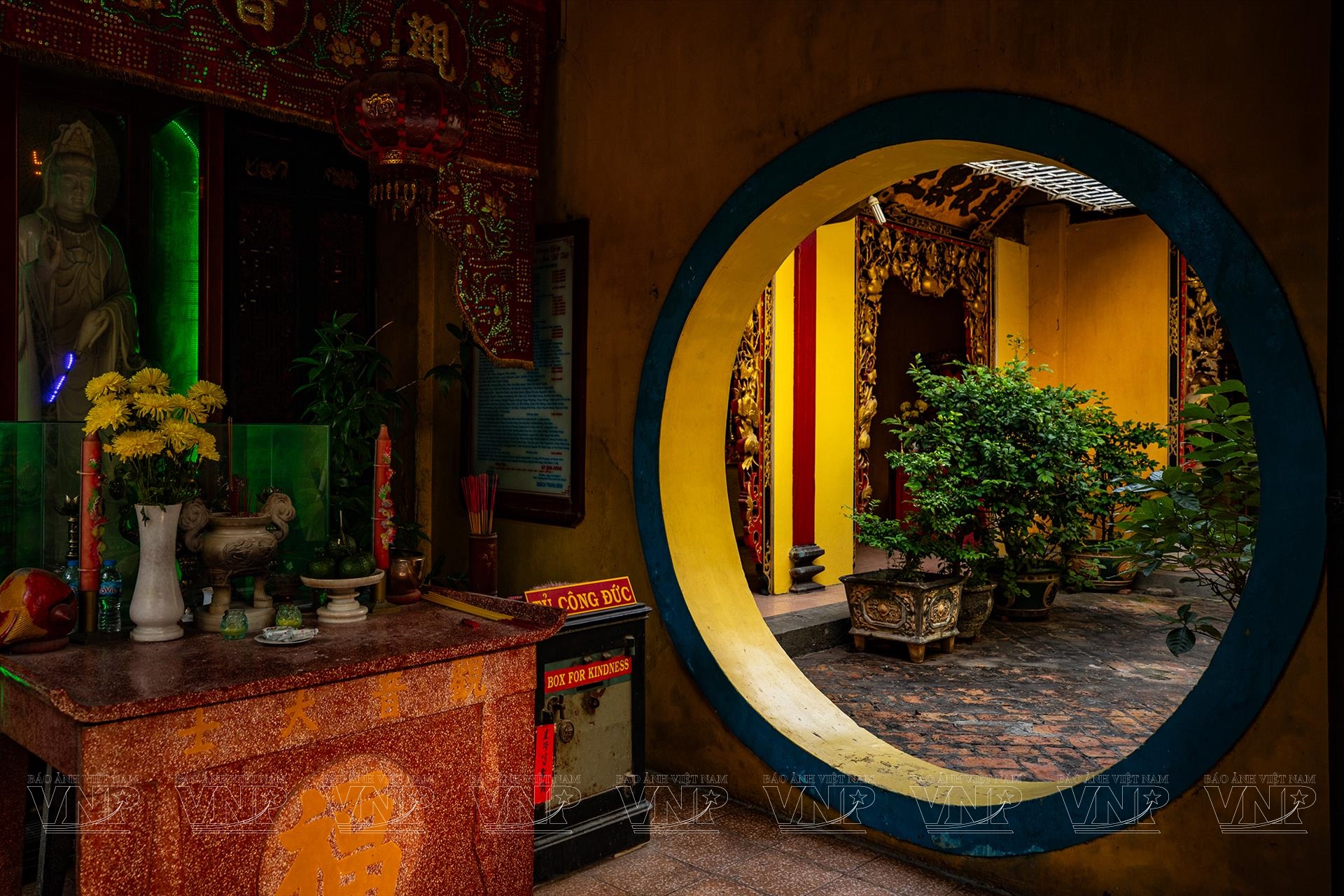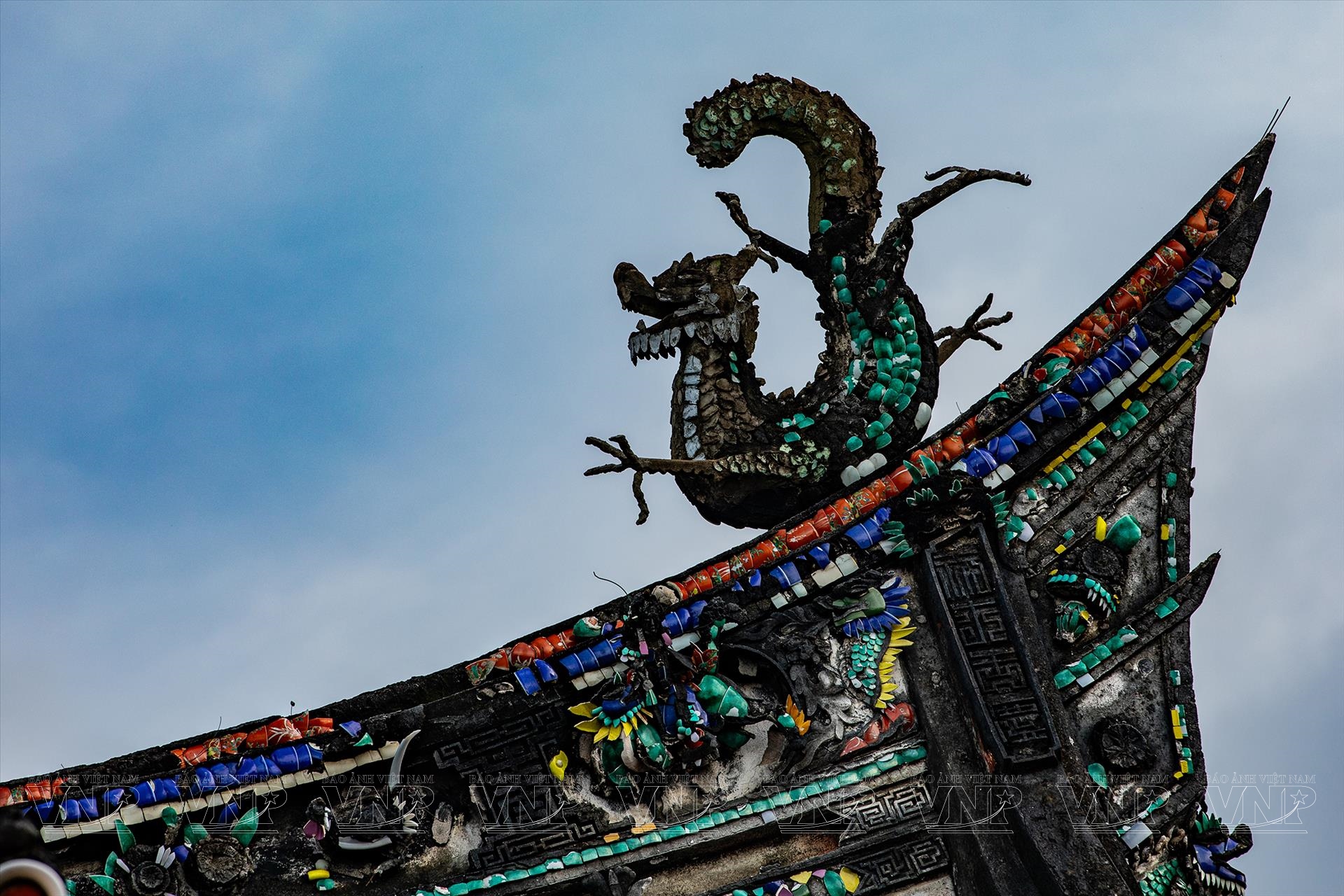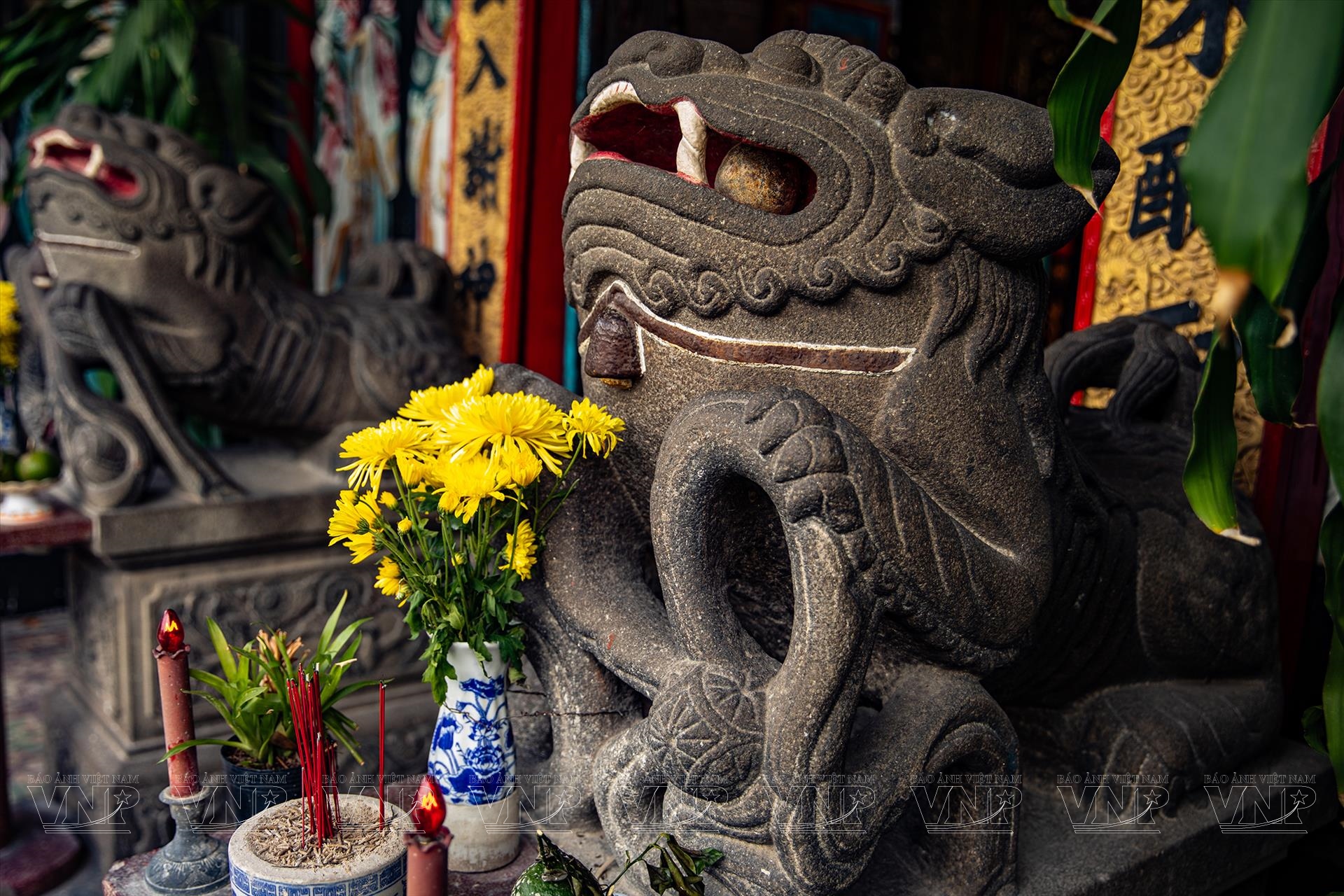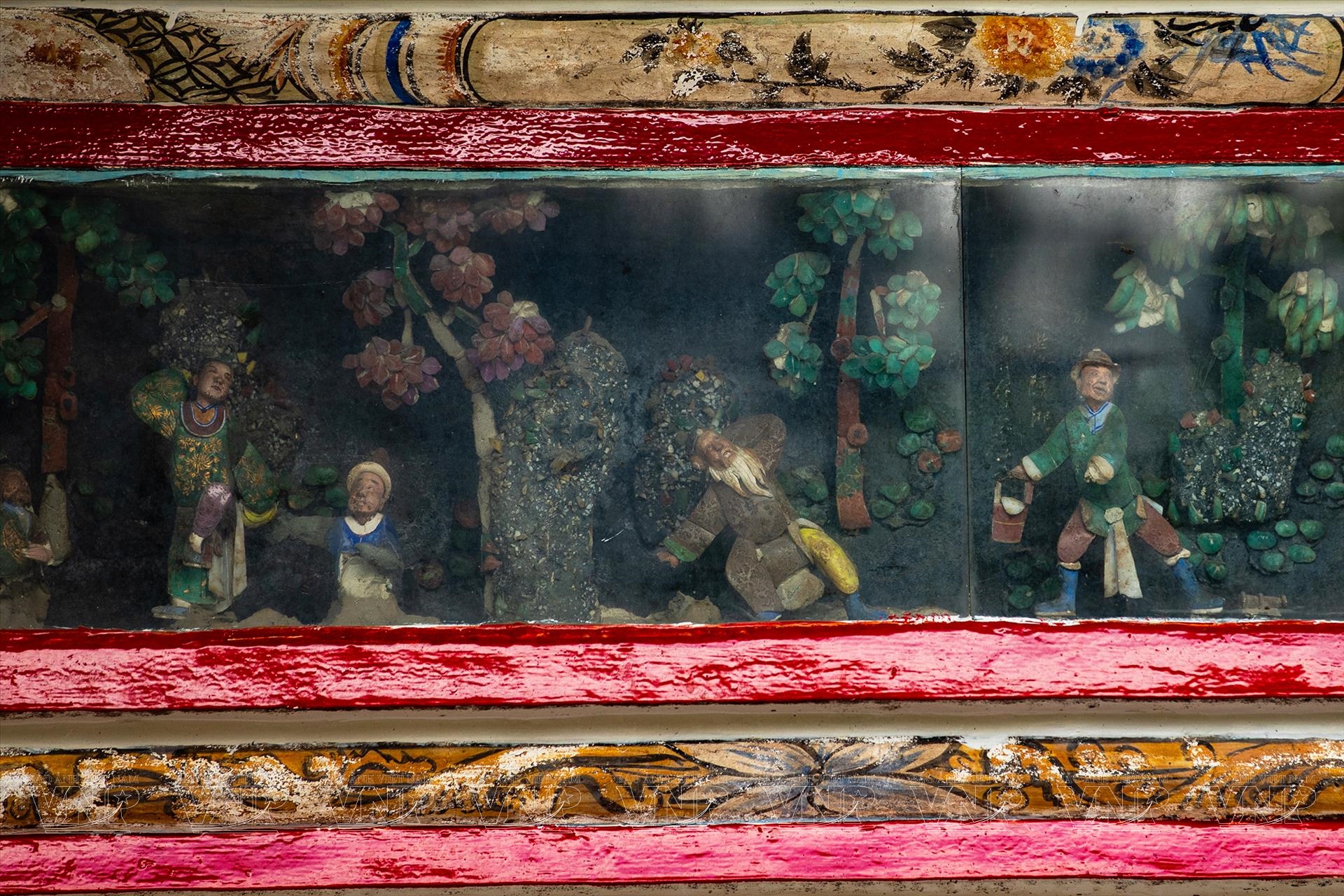Visiting Ong Quach Pagoda
Kien An Cung, also known as the Ong Quach Pagoda, is a hundred-year old one situated right in the heart of Sa Dec City, Dong Thap Province. This pagoda, which has antiquity and showcases remarkable architectural features of Chinese culture, was officially recognized as a national historical relic in 1990.
According to research, Kien An Cung was constructed in 1927 by a group of Chinese immigrants from Fujian Province (China) who settled in Sa Dec. The pagoda was built to honor ancestors and also to foster community ties in the locality. It is strategically positioned facing Cai Son canal, designed in an imposing and dignified "gong" character layout. Its frontal facade has a harmonious design with three main sections, where the yin-yang tiled roof is intricately curved, resembling the undulating waves of dragons, symbolizing prosperity. The six peaks of these waves represent majestic miniature palaces, symbolizing resilience and achievement in overcoming adversity.
The unique essence of this pagoda lies in its majestic and resplendent architectural style, adorned with vibrant hues inside, while maintaining a sense of solemnity through clearly delineated worship areas. It has an ancient charm with brick walls and time-worn tiled roofs. At the apex of the pagoda’s roof, four small horizontal towers hold statues of celestial beings, Buddhas, saints, and in the center, a motif of a pair of dragons embracing the moon. Flanking the main entrance path are two large green stone unicorns, while on either side stand depictions of two deities (representing Good and Evil) guarding the doors. Within the main hall is a celestial well, allowing natural light and ventilation, ensuring the temple remains bright and airy at all times.
The celestial well serves a wonderful purpose by swiftly dispelling the thick incense smoke during crowded festive days when numerous visitors flock to the pagoda. Inside, the pagoda features imposing, glossy black columns adorned with an abundance of horizontal lacquered boards, couplets, banners, inscriptions, and decorative screens, all meticulously crafted and gilded in radiant gold. Adorning the walls are numerous paintings done in a traditional style, depicting ancient tales and stories with profound educational and allegorical significance, conveying profound and enduring messages.
In the center of the main hall stands the altar of Ong Quach (also known as Quang Trach Ton Vuong), revered and honored as a saintly figure. Positioned in front of this altar is a statue of Emperor Quan Thanh, flanked by two shining rows of ceremonial weapons. To the left and right sides, there are designated areas known as the east and west lounges, serving as reception spaces for visitors who come to pay their respects. Annually, the temple hosts two significant ceremonies on February 22 (Ong Quach's birthday) and on August 22 (the day he attained enlightenment) of the lunar calendar. These ceremonies involve elaborate rituals, drawing large crowds of devotees who come to participate and offer prayers.Located in close proximity to the ancient house of Huynh Thuy Le, the Sa Dec Flower Garden, and other historic landmarks like the Ba Thien Hau Temple, and the Huong Tuy, Kien An Cung's depiction of Sa Dec paints a captivating picture of a serene and historically rich city nestled alongside the enchanting Tien River. The portrayal highlights Sa Dec as a tranquil and idyllic destination, steeped in antiquity and endowed with a serene atmosphere that captivates visitors.


